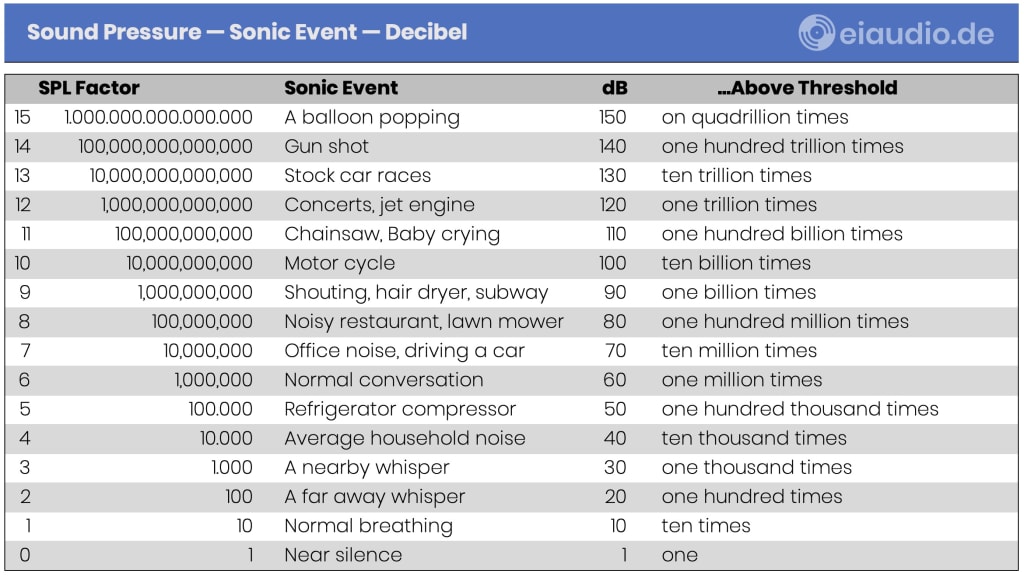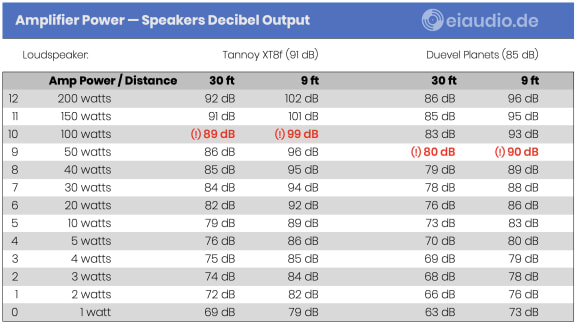28. Watts, Sound Pressure, Decibel
Published: 02/12/2022
Author: Karsten Hein
Category: High Fidelity
My first memories of leafing through advertisements for HiFi gear stem from mail order catalogs during the early 1980s. There were a handful of units presented on each page with small numbers linking the photos with crammed description boxes that provided a short list of specifications. Due to the fact that the concept of mail order required for purchase decisions to be made remotely, without the possibility of sensory feedback, I remember weighing my interest based on two criteria: the aesthetics of the design and the wattage output of amplifiers. In terms of design, I found myself veering towards shiny buttons, bright lights, and large power meters. When it came to watts, I was inclined to follow the simple rule of ‘the more power, the merrier’. Luckily, I did not have the means to make a purchase myself, and my parents objected to purchasing from mail order catalogues altogether.
In later years, I sometimes came across such HiFi systems at friends’ houses and was surprised to find loudspeaker cabinets that were made of resonant chipboard with smallish-looking drivers that were often surrounded by painted or glued-on silver rings to make them look more impressive. The amplifiers claiming to offer 1,000 watts of power output weighed half of my 40 watts receiver and sounded rather tame and weak-chested. Taking a look inside, there was little electronic basis behind the large power meters to back up the bold claims. But how then was it possible that the technical specifications did not translate into superior sound quality and power output? At that time, I did not have a good explanation for this phenomenon and only made a mental note that I had better be careful when purchasing gear, in order to receive real value for money and not fall for inferior quality.
Many years have passed since my early explorations, and I have since learned that a HiFi system’s ability to play music clean and loud depends on four basic factors: 1. the continuous (not peak) power output potential of the amplifier into a given Ohm load (rated in watts, RMS); 2. the maximum power handling capacity of the loudspeakers at that Ohm load; 3. the loudspeakers’ power sensitivity level (dB, at 1W/1m), and 4. the preferred listening distance from the speakers. The distance is important, because the listening volume halves as the listener’s distance to the speakers doubles. The decibel (dB) rating itself is measured at 1 watt input and one meter distance from the loudspeakers. Decibel is a logarithmic scale to measure volume that was introduced by the American Bell telephone company to measure signal loss on long runs of telephone lines.
Zero decibel was defined as being near silence for adult listeners, and ten decibel were defined as ten times this amount. With the scale being logarithmic, twenty decibel were defined as ten times louder than 10 decibel, thus resulting in 100 times the sound pressure level, and so on. Following this scale, a balloon exploding at 150 dB is one quadrillion times louder and normal conversation is one million times louder than a volume level near silence. The table called ’Sound Pressure — Sonic Event — Decibel’ provides an overview of everyday sounds, their decibel ratings, and the corresponding sound pressure levels on a linear scale from near silence to the most deafening sound. Hearing loss from high listening volumes is usually the result of a combination of being exposed to a very loud sound over a longer time period. While a popping balloon may have the potential to surprise or even frighten us, there is little risk to our ears.
The decibel scale proved to be useful for sound pressure level measurements and is also said to be much closer to the human perception of sound volume than the linear scale. However, it does not match the human ear exactly. Humans perceive the listening volume to double with every increase of six decibel. The table ‘Sound Pressure — Sonic Event — Decibel — Human Perception’ therefore aims to bring some perspective to this difference. According to the human ear, a popping ballon is approximately twenty-five times louder than near silence, not one quadrillion as the linear scale would suggest.
The table ‘Amplifier Power — Speaker Decibel Output’ contrasts the characteristics of two contemporary loudspeakers: the British Tannoy XT8f dual-concentric towers and the German Duevel Planets. The table shows that it takes ten times the amp power for the speakers to play 10 dB louder, regardless of the loudspeaker chosen. In calculating the necessary amplifier power, I factored in 3 dB headroom, which I felt to be realistic for real-life indoor applications. The Tannoy towers started from a commendable sensitivity rating of 91 dB 1W/1m. Listening from 9ft or two meters distance, one watt of power produces 79 dB. This volume level is comparable to being in a noisy restaurant and should be sufficient for most applications. At full 100 watt capacity, the Tannoys produce 99 dB of sound pressure at two meters distance (which is the equivalent of having a running motorcycle in the room) or 89 dB (similar to a person shouting) at 10 meters distance. This should be plenty of sound pressure to entertain the occasional party.
The Duevel Planets are rated at 85 dB (1W/1m) and come in at 73 decibels when listening at two meters distance. They reach the Tannoy’s comfortable 79 dB at four watts only, and, at this time, the amplifier already needs to do quite a bit of work. At their maximum 50 watts capacity, the Duevels produce 90 dB (shouting) when listening at two meters distance and 80 dB (noisy restaurant) at ten meters. This means they are less equipped to power living room parties than the Tannoys. The nine decibels in resulting difference will make the Tannoys seem 1.5 times louder than the Duevels.
As we can see for these findings, human the human perception of sound pressure is not linear. With perceived volume doubling every 6 dB, it is more similar to the logarithmic decibel scale. Amplifier watts are only meaningful when they are also quoted as continuous and not as burst or peak power. In fact, peak power output can be ten times higher than continuous output, if the capacitors are large enough. Amplifier output wattage depends on the Ohm rating on the connected speakers. An amplifier rated at 8 Ohms will produce much higher power into a 4 Ohm load. Sufficient amplifier wattage paired with high sensitivity and high power handling capacity on the side of the speakers will lead to high sound pressure levels, if so desired.




